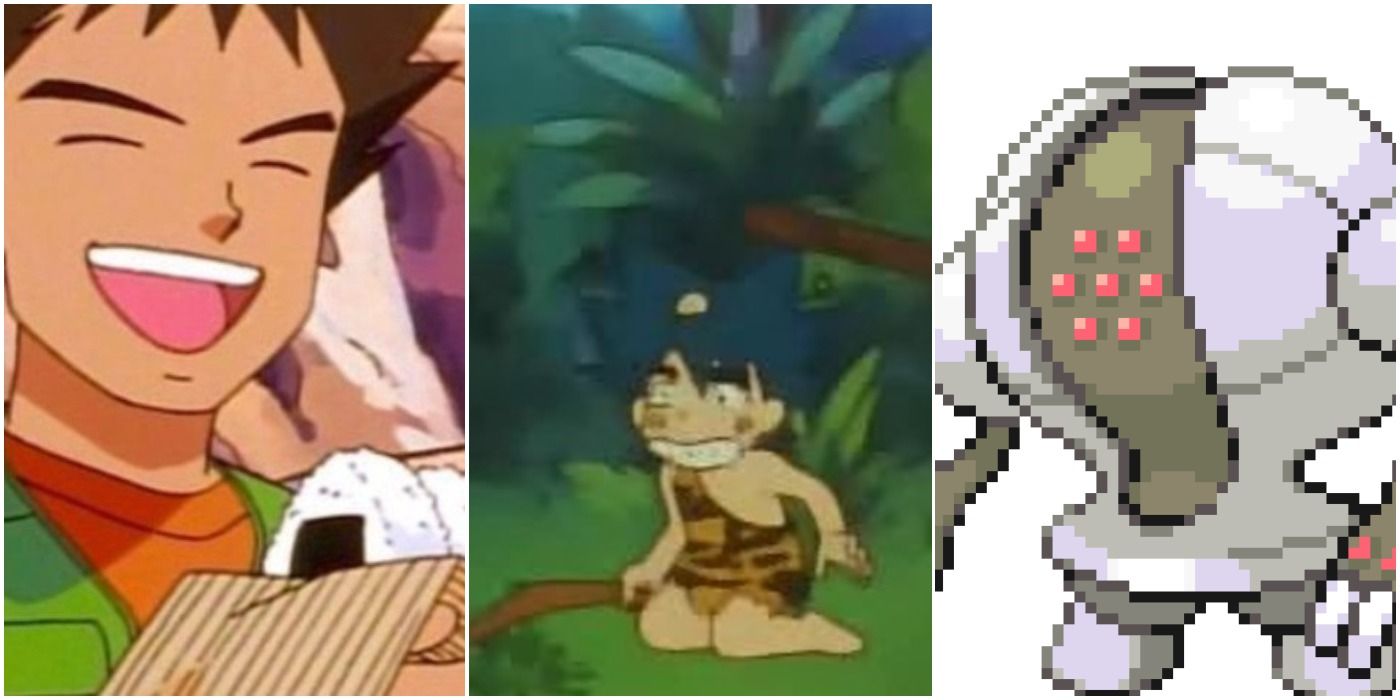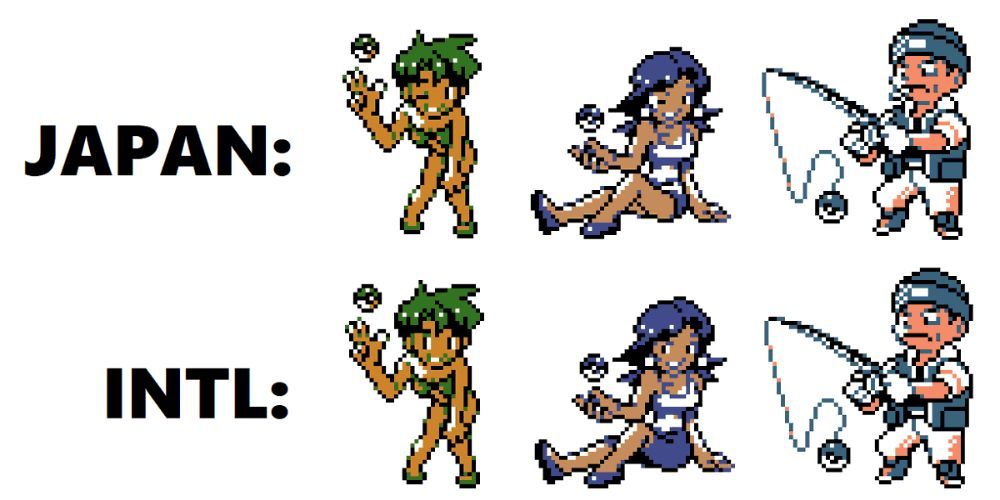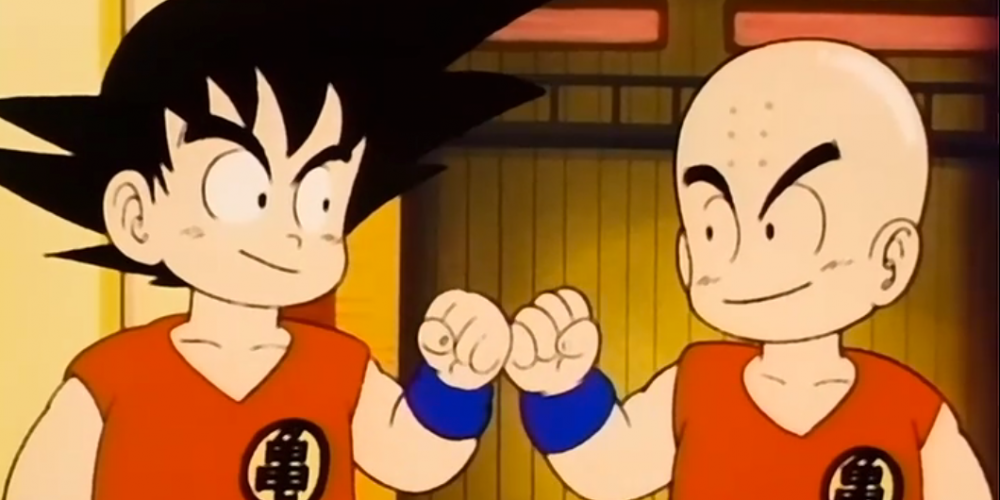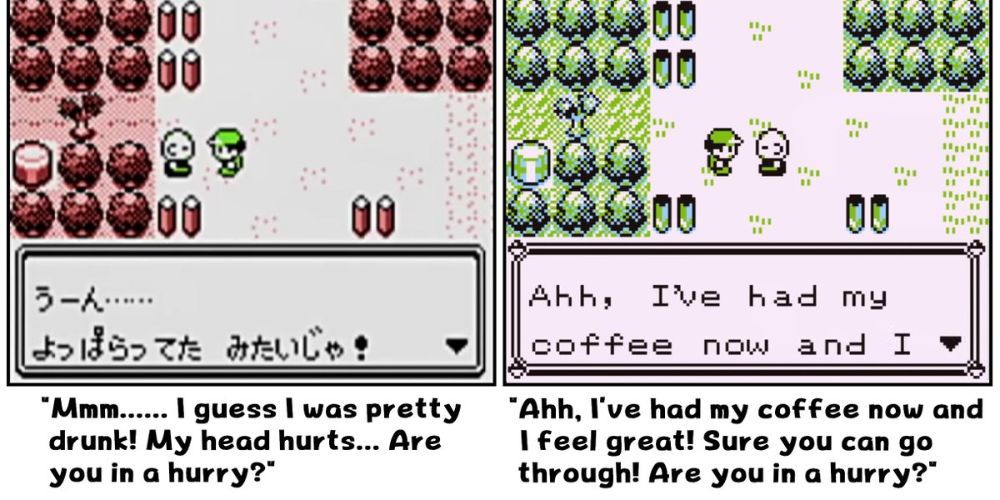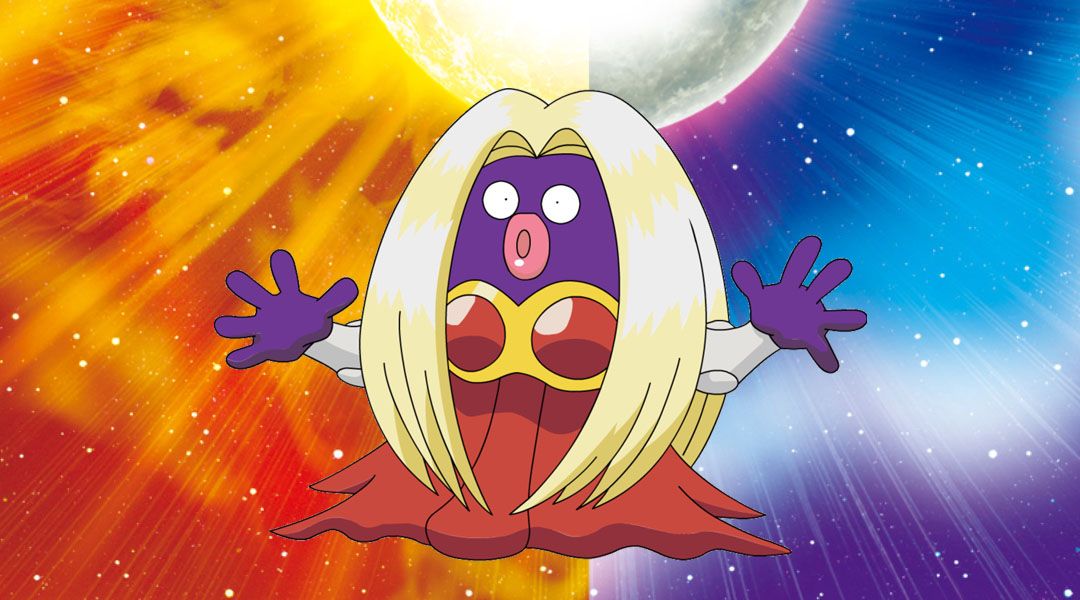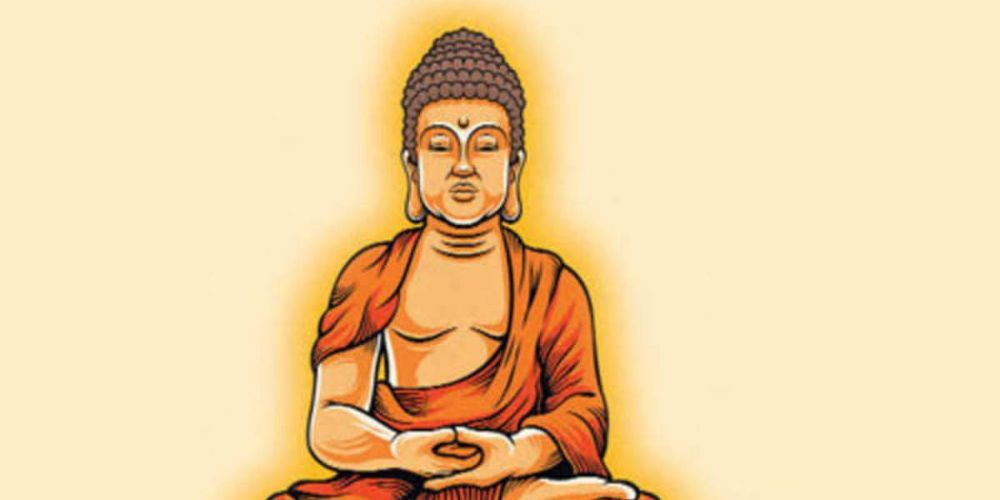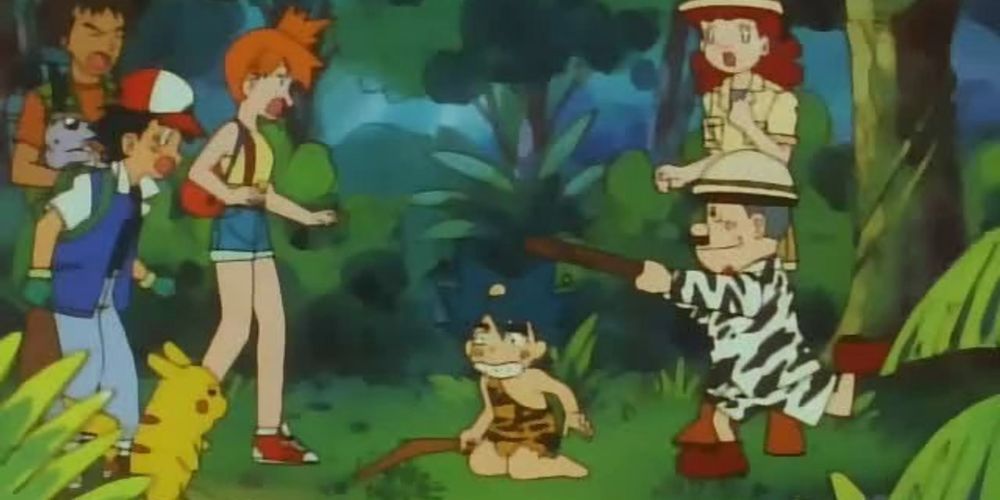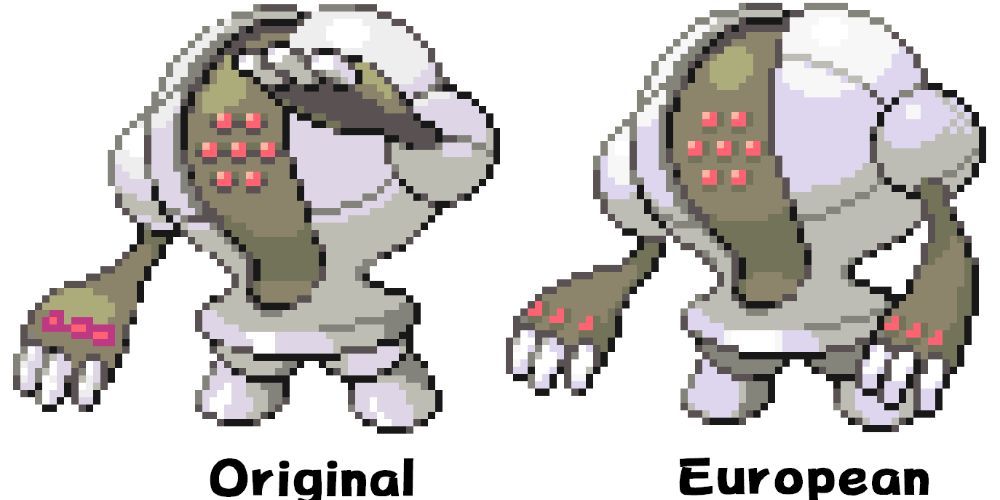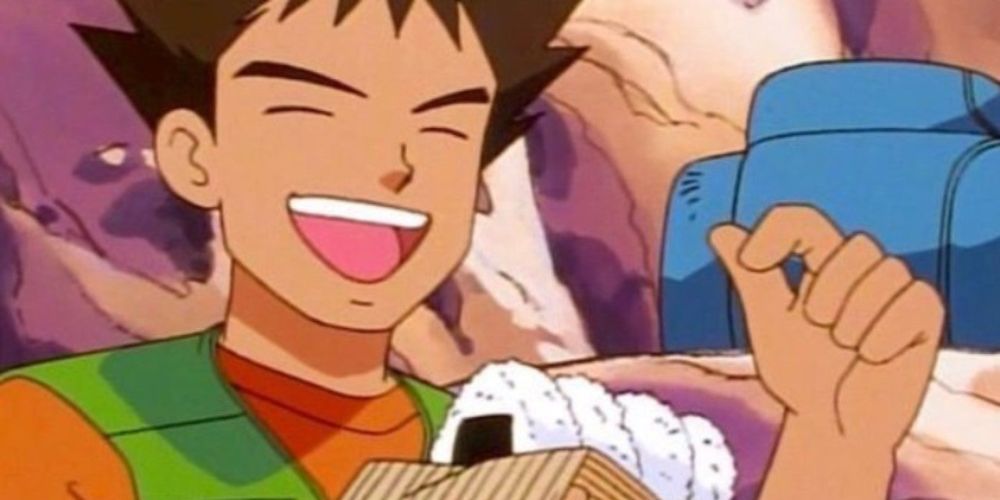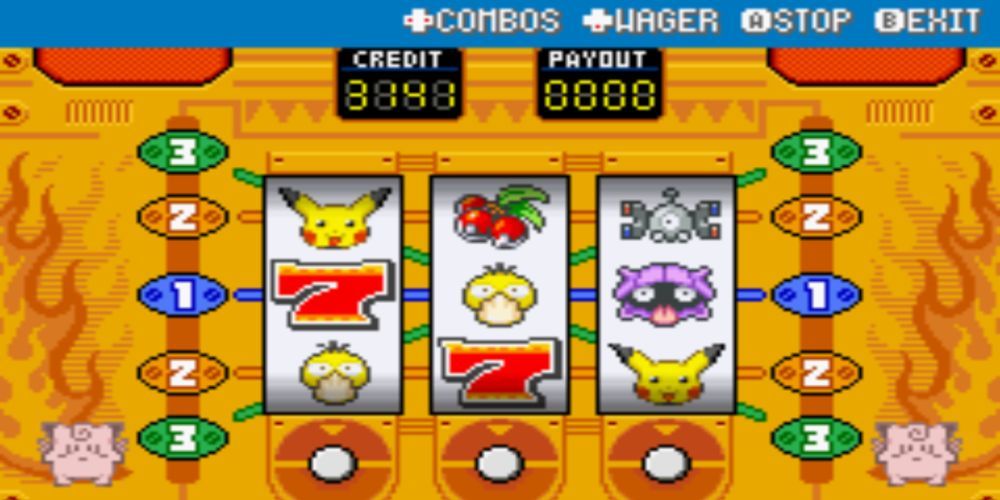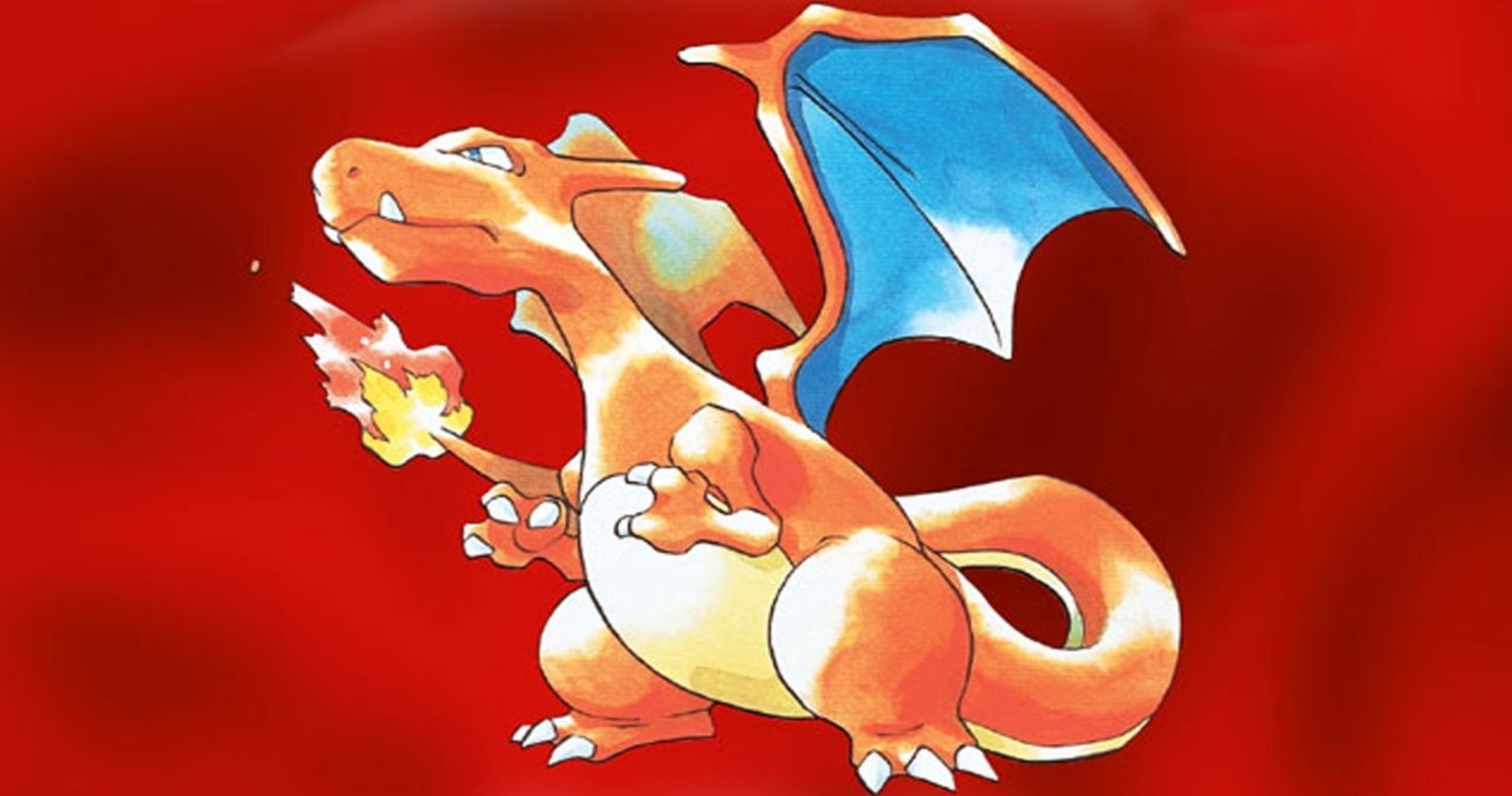Localization refers to translating cultural aspects of games for foreign audiences. This doesn't just mean translating the text or voice acting itself; it usually takes the form of linguistic or visual changes as well. These changes are often necessary for players foreign to the developers' country. Some things that seem normal to one person might be confusing to others, especially across international borders.
Translations for the first few Pokemon games were completed chiefly by a single freelancer, Nob Ogasawara, which led to a few minor inconsistent translations between the English and Japanese versions. However, localization goes a lot deeper than just language. It even gets into some relatively taboo subjects in Pokemon's early history, which not all fans might know about.
10 Edits To Female Swimmer & Beauty Trainer in Gold/Silver
The Female Swimmer and Beauty Trainer sprites when battling in Pokemon: Gold/Silver Version have different appearances in the Japanese original. In the American version, the Beauty Trainer is shown with a long skirt, and the Female Swimmer has no special animation.
In the Japanese version, though, the Beauty Trainer has a noticeably short skirt, while the Female Swimmer will wink at the player. Considering the games are meant for kids and the player character is a child, it's an understandable change.
9 The French Red/Blue Localization's Dragon Ball Reference
In the English localization for Pokemon: Red/Blue Version, and in most other translations, interacting with the TV in Pallet Town gives the message, "Four boys are walking on railroad tracks". This is a reference to the film Stand By Me. French players, though, got a completely different reference.
Instead, French players got the message, "An animated show! A little boy with a monkey's tail." This is a clear reference to Goku in the original Dragon Ball anime.
8 The Drunk Man In The Japanese Red/Blue
In Viridian City the player talks to the Old Man, who was previously laying on the floor, right after delivering Oak's Package. He will say he had some coffee, which woke him up. However, this was a localization change. In the original game, the man was drunk.
This wasn't just an implication, either. The man hiccups and complains about being drunk, while his sprite on the ground has rosy cheeks. The Old Man's dialogue and the sprite both changed in foreign releases.
7 The Infamous Jynx Recolor
Jynx is a Pokemon with a controversial history. In the first generations of the games, and in the original cuts of the anime, Jynx was shown with jet black skin, giant lips and white eyes. These features are similar to stereotypical racist depictions of an African or dark-skinned person.
It's debated whether the original sprite was a racist homage, or a take on the Ganguro fashion style. Audiences in the west, though, would probably be more likely to assume the former. Either way, Jynx now has purple skin and a revamped look in all modern appearances.
6 Censoring Religious Imagery For American Localizations
The original Pokemon games have a lot of religious imagery, more than the average fan might realize. However, in order to be released in American markets, the games had to adhere to Nintendo of America's rules. These included no religious imagery of any kind.
Thus, the Buddhist Altars were removed from Celadon City, Mediums no longer hold prayer beads, and the Sage no longer has a praying pose. Countless other small edits were made to make the original Pokemon games suitable for Americans.
5 The Kangaskhan Kid
In the episode of the original Pokemon anime "The Kangaskhan Kid", the eponymous child seems innocent enough in the English translation. He asks Ash and the gang whether they are humans or Pokemon. In the original anime, the kid was much more of a deviant.
In the Japanese version, the kid looks up at Misty, notices her breasts, and asks to suck milk from them. The camera even zooms in on Misty's chest after he asks. The episode's localizations provided a much-needed change that helped keep the 10-year-old character from being sexualized for international audiences.
4 Censoring Nazi Imagery For European Audiences
There were many years where not many localization changes were noticeable between the release of Red/Blue Version and Diamond/Pearl Version. In the latter, though, the Pokemon Registeel had its sprite censored for the European versions of the game, due to its similarity to the Nazi Salute.
The Diamond/Pearl Version anime also featured this same pose for Registeel, as well as a scene where the Team Rocket gang appear to be performing a similar salute. Each of these instances has since undergone changes.
3 Americanized Food In The Anime
One of the most famous localization changes in the original Pokemon anime (and in many subsequent series) is the censorship of rice balls, of all things. Onigiri, Japanese rice-based snack, appears in the show quite a lot.
In the Western localizations, though, the Onigiri is not called a rice ball – Brock famously calls them "jelly donuts" at one point. Sometimes, creators replaced them with expensive re-drawn images of American food like burgers. Apparently, Japanese food is too unfamiliar for American kids to handle.
2 Removal Of The Game Corner
The Game Corner was another aspect of the first four generations of Pokemon games that some now consider controversial. The Game Corner let players take on games of chance to win special prizes, like unique Pokemon or accessories.
However, Nintendo removed this feature entirely starting with Pokemon: Black/White Version. It's likely because the company was concerned about getting the game past European gambling restrictions. Now, all minigames are skill-based in the Pokemon series.
1 The Hiker's Magic Mushrooms In The Original Red/Blue
In Pokemon: Red/Blue Version, there is a Hiker that the player can find and battle on Route 10. Upon defeat, he will blame his sudden violence on "hay fever" after laughing. In the original Japanese version, though, he blames his behavior on drugs.
The Hiker, upon defeat, will laugh maniacally and exclaim that he ate some "wild mushrooms" earlier. Hopefully, they were indeed wild mushrooms and not a poor, innocent Parasect.

